Calculating Magnification and Size
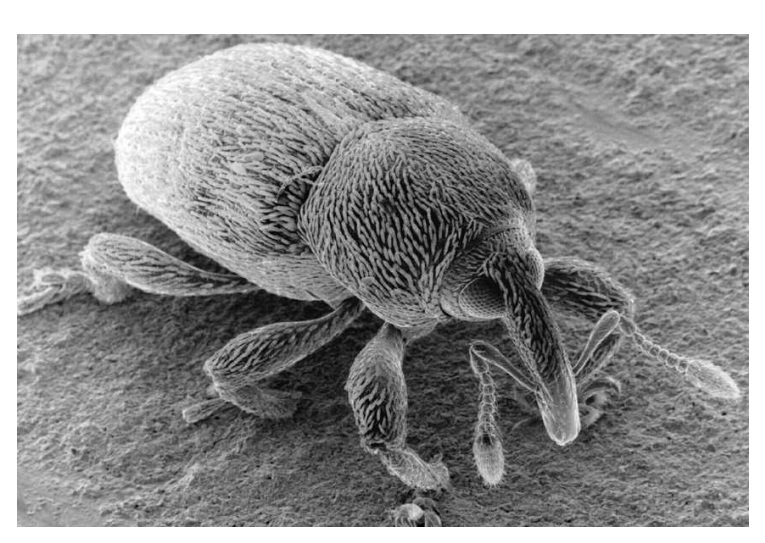 In this activity students are shown how to calculate magnification and image sizes using scale bars. Then they learn how to calculate specimen size using magnification. The resources can be projected on the interactive whiteboard and there is a student worksheet with some extra examples for students to practise. There is also a short video screencast for this activity.
In this activity students are shown how to calculate magnification and image sizes using scale bars. Then they learn how to calculate specimen size using magnification. The resources can be projected on the interactive whiteboard and there is a student worksheet with some extra examples for students to practise. There is also a short video screencast for this activity.
Lesson Description
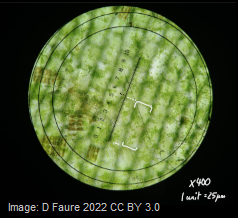 Guiding Questions
Guiding Questions
How do we calculate the magnification of an electron microscope image from a scale bar?
How can we calculate specimen size using a scale bar or the image magnification?
Activity 1 Calculating magnification of an image using it's scale bar
The three images below (click the eye to reveal) show a worked example of how to calculate sizes of cells organelles from electron micrographs step by step. Follow these steps carefully then complete the calculations on the worksheet.
The scale bar is the best way to show the size of the original object because whatever magnification of the image the scale bar still shows the size accurately in proportion to the object. Whatever size you printer prints the page, you should calculated the same size.
There are three important items for this calculation, a ruler, a scale bar and an image.
Don't use the ruler on the sheet to measure the image, use an accurate ruler marked in mm.
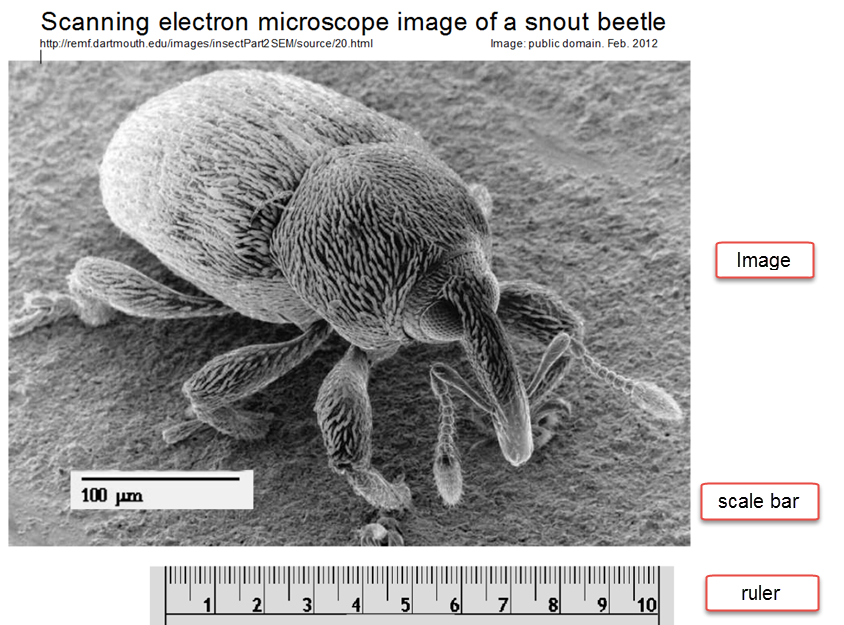
This is a step by step explanation of the calculation

Click the eye icon to reveal another example to try.

Activity 2 Calculating the size of a specimen using the scale bar on the image
Sometimes it is the actual size of the specimen which is important. Van Leeuwenhoek did similar calculations to estimate cell sizes in the 1600s, but he didn't have a scale bar.
Click the eye icon to reveal a step by step calculation of specimen size using the scale bar.

Activity 3 Calculating the size of a specimen using the magnification of the image
Sometimes there is no scale bar but the magnification of the image is given.
The image below shows three steps to calculate image size using the magnification.

Students can complete two examples of each calculation on the ![]() Calculating magnification and size worksheet
Calculating magnification and size worksheet
Activity 4 - Uncertainties in these measurements with rulers
How precise is a ruler?
If you measured this scale bar would you measure it as 52 or 53 mm long?
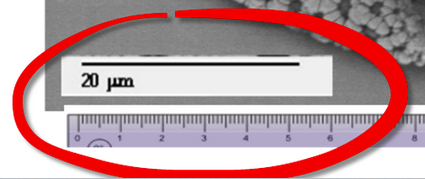
In the IB diploma the length should be recorded with an uncertainty, as 52 mm +/- 1 mm .
The +/- 1 mm is called the uncertainty. This means that the actual length could be 51, 52 or 53 mm.
Why is this?
Click the eye icon to see an explanation.
First there is an unavoidable error when the zero of the ruler is lined up.
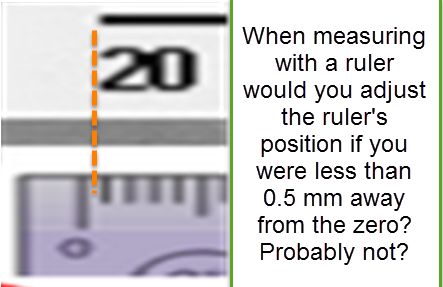
There is also an error when you read the end of the line. This is also 0.5 mm.

If you add these two values together it makes a reading with an uncertainty of +/- 1 mm.
The general principal is that a ruler is only accurate to +/- the smallest division on the ruler.
It's OK that the units are written twice in a measurement like this. E.g. 23 mm +/- 1 mm
Keep the same number of decimal places in measurements and their uncertainties, E.g. 12.0 °C +/- 0.5 °C
Further information about uncertainties in biology
There is another opportunity to explore these ideas of uncertainty in biological measuring equipment experiment.
Teachers notes
This lesson is a good introduction to measuring the size of cells using scale bars.
When going over the answers students will sometimes have slightly different answers because of small measuring differences. This can lead students to ask, "which is the right answer"? This is a great opportunity to explain about measurement errors and uncertainties.
An excellent end to this lesson would be to work out what the uncertainties in the measurements are, how accurate are the sizes which have just been calculated. This is the aim of activity 4.
- TOK
- Sense perception. Can we believe what we see in a microscope?
- Microscopes extend human vision - improvements in microscope technology is often followed by new discoveries.
There are also a few extra resources:
Whiteboard resources for teacher or student use in a lesson.
Calculating linear magnification screencast demonstration
Vocabulary list - it is useful to introduce these term before starting the measuring
- µm
- nm
- magnification
- scale bar
- specimen
- object
Alternative Worksheet 1
This is an older worksheet which gives scaffolding for the student answers, however it's layout is not so neat.Alternative Worksheet 2
This worksheet is an alternative to the activity above. It has less guidance for students so may suit brighter students. Use the electron microscope images to determine the actual size and / or the magnification of the image.
there are some model answers for this worksheet here: Alternative worksheet 2 model answers
Additional resources:
An older activity worksheet for students
Use of microscopes - Nikon MicroscopeU - some excellent resources and images

 IB Docs (2) Team
IB Docs (2) Team
